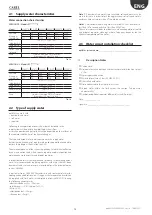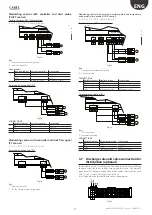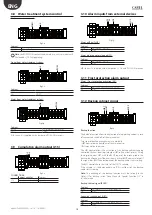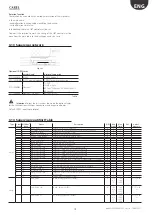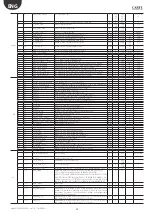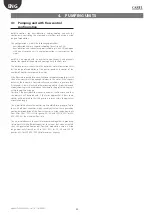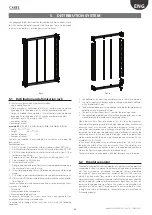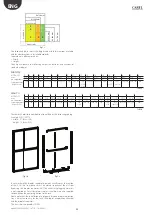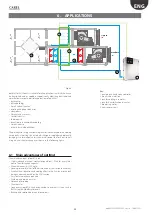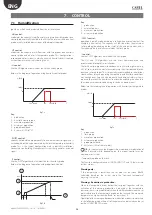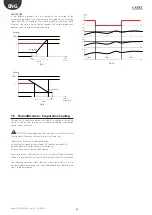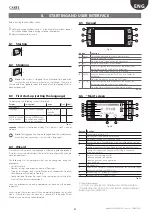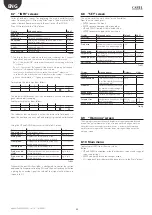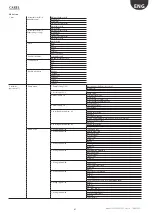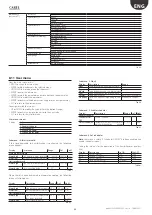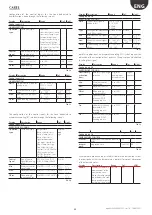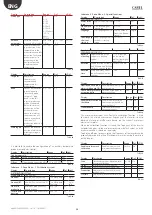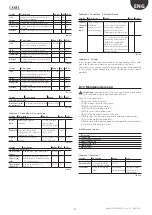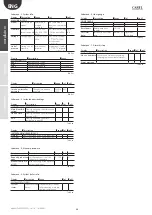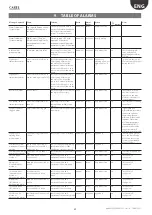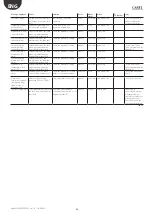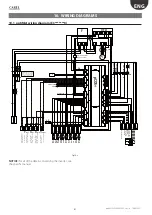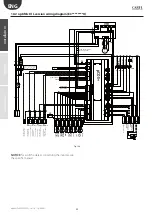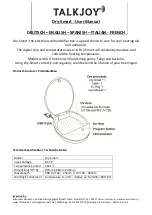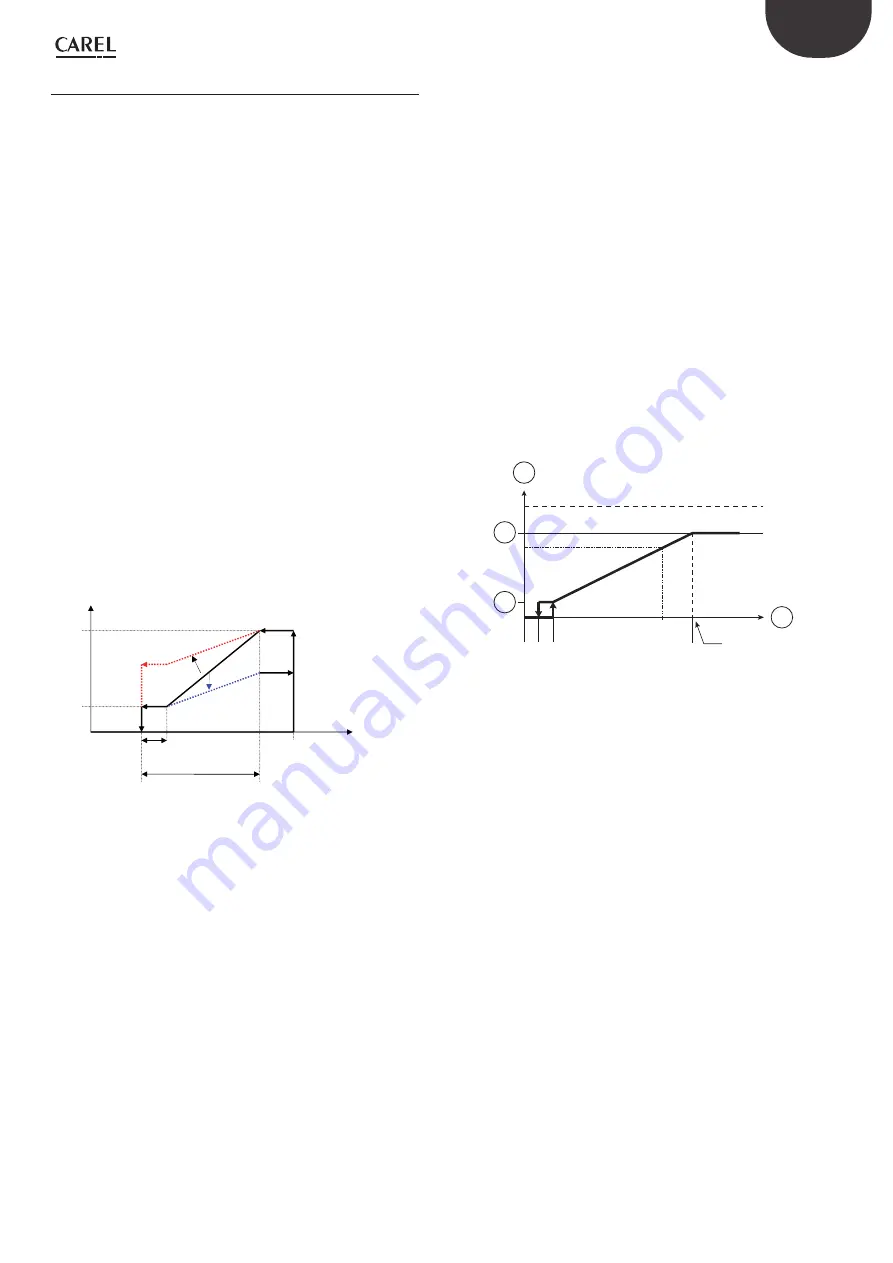
27
ENG
“optiMist” +0300065EN - rel. 1.6 - 18/06/2021
7.2 Evaporative Cooling
If optiMist is used as an application dedicated to evaporative cooling, the
possible controls are:
•
TT Control
•
TH Control
•
TF Control
•
T Control
•
PH/PT/PF Control
•
P Control
•
C Control
•
CH/CT/CF Control
IMPORTANT:
All of these controls require a consent signal that lets the
humidifier know when it can operate. This indication corresponds with
the activation of the recovery unit in the Air Treatment Unit (ATU); this
information can be sent to the humidifier through:
•
a modulating 0-10V signal (corresponding to the opening of the
renewal air locks) or
•
a digital contact or
•
a digital variable via supervision (DIG 63).
A delay in the humidifier activation can be set, starting from the activation
signal from the recovery unit previously described.
T CONTROL
This type of control consists of a PropoIntegral type control of the
temperature detected by a probe located in the return air, downstream
from the exchanger.
The proportional action will allow for the control of the flow-rate as a
function of the distance between the temperature detected and the
setpoint. The integral action, on the other hand, will act on the reaction
speed of the system.t. L’azione integrale, invece, agirà sulla velocità di
reazione del sistema.
Grafico 1
Temp
.
Fatt.P
SET
SET
+ ∆
Band
Hyst=10%Band
Fig. 7.d
As seen in the figure, increasing factor P (dashed red line) reduces
sensibility to temperature variations, resulting in a decreased reduction
request in correspondence to the same temperature variation. The
integral contribution, on the other hand, reduces the request to a greater
extent the longer the deviation from the control temperature setpoint
remains.
• controllo TH:
This type of control is used to modulate the capacity (water flow-rate)
with a temperature probe, installed in the return air, downstream from
exchanger, an a limit humidity probe, usually installed downstream from
the droplet separator.
In order to enable this configuration, a droplet separator is NECESSARY,
otherwise there is a risk that the probe could get wet, thus constantly
detecting humidity values close to the saturation point.
The humidity probe will further limit the maximum request.
TT CONTROL
This type of control is used to modulate the capacity (water flow-rate)
with a temperature control probe and a temperature limit probe. The
control probe is usually installed in the centre of the room and the limit
probe in another “critical” point where the temperature must absolutely
not be lower than a settable limit value.
TF CONTROL (T + air flow/flow-rate limit)
This type of control is used to modulate the capacity (water flow-rate)
with a temperature control probe and an air flow modulator, which can
correspond to:
•
the modulating opening signal of the recirculation air lock;
•
the modulating signal from the fan
In this case, the limit signal will function as:
•
a temperature limit signal, in the event of a modulating signal from
the fan
•
a humidity limit signal, in the event of a air lock opening modulating
signal.
PH/PT/PF CONTROL
The modulation of the capacity is proportional to an external control
signal and limited based on the measured value of the temperature,
humidity or flow limit signal.
This is the typical configuration when the control is entrusted to a
Building Management System that generates a control signal.
• P Control
This control is like the PH control, but without humidity limit probe.
The following is a graphic with proportional control.
100%
max
1
2
3
4
5% 5%
Fig. 7.e
Key:
1.
production
2.
external request
3.
maximum production
4.
minimum production
CH/CT/CF CONTROL
This control mode corresponds to the ON/OFF operation, from a non-
powered external contact (for example, a humidistat).
The capacity will therefore be the maximum set or nothing (no
modulation) according to the status of the external contact and limited
based on the limit signal.
See sections TT/TH/TF for more information regarding limit signals.
C CONTROL
This control corresponds to the ON/OFF operation mode without any
limit probe. The request directly follows only the control contact.
NOTE: Whenever the activation signal from the recovery unit is a digital
signal, the control contact will NOT be the same signal; they will be two
distinct signals.

